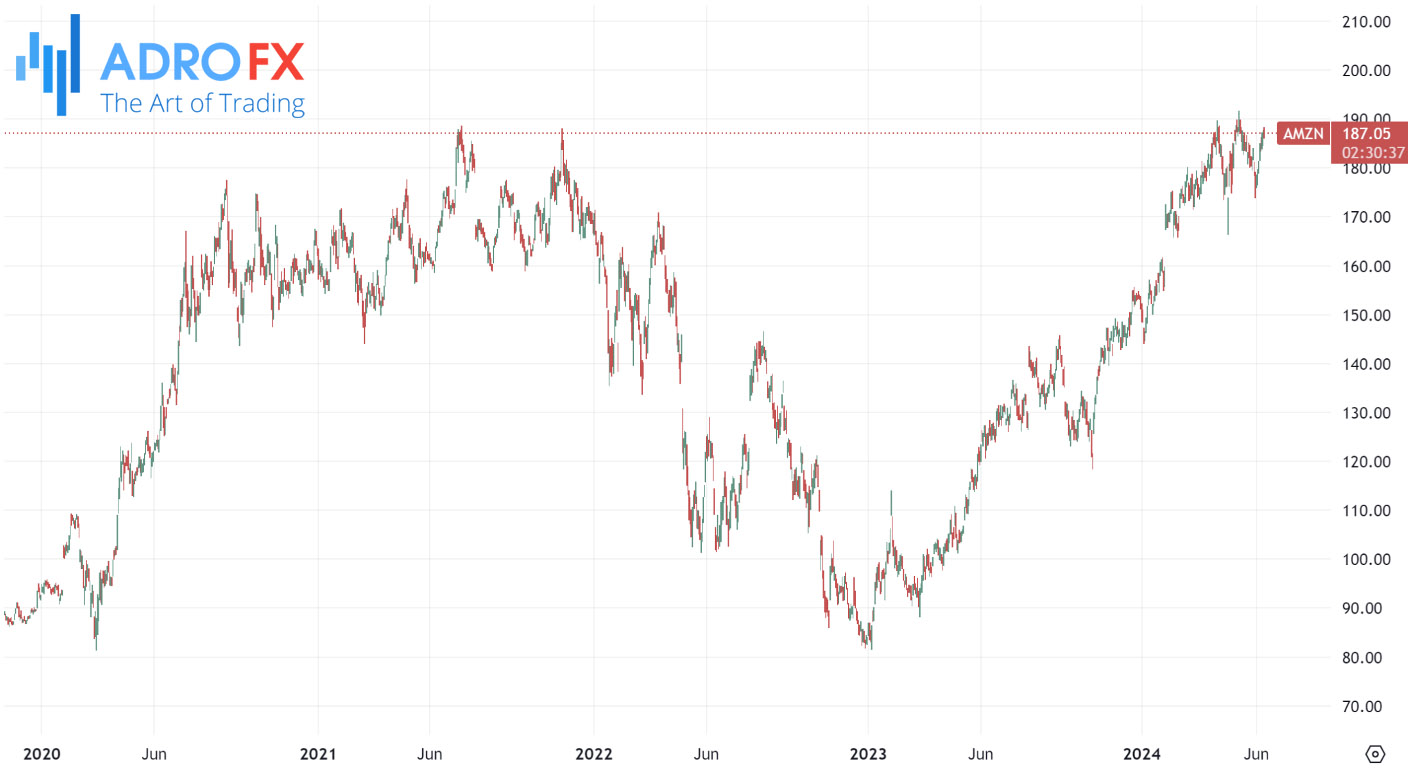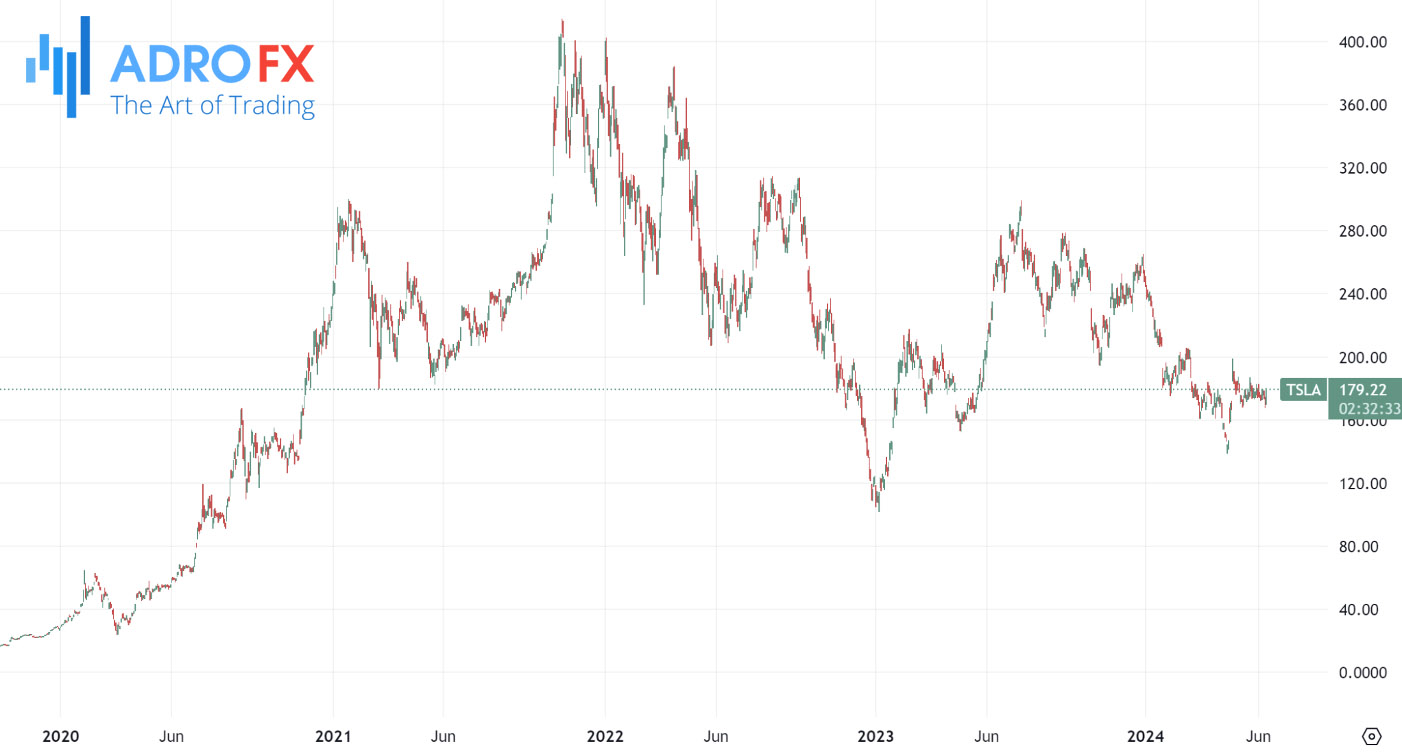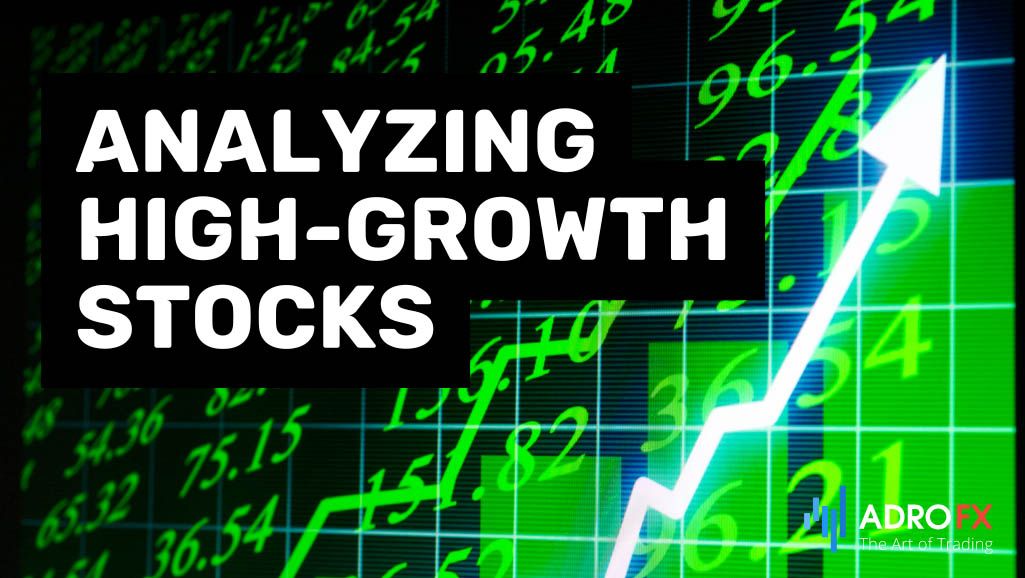Navigating the High-Growth Landscape: A Comprehensive Guide to Identifying and Trading High-Growth Stocks

High-growth stocks are equities of companies expected to grow at an above-average rate compared to others in the market. These stocks are typically characterized by their rapid revenue and earnings growth, innovative products or services, and the potential to dominate their market segments. Investing in high-growth stocks can be highly rewarding, offering substantial returns as these companies expand and increase their market value.
Incorporating high-growth stocks into an investment portfolio is crucial for investors aiming for significant capital appreciation. These stocks can drive overall portfolio performance, especially during bullish market conditions. However, they also come with higher risks, as their valuations can be volatile and sensitive to market fluctuations and economic changes.
This article provides a comprehensive guide on identifying and trading high-growth stocks. Readers will learn the fundamental characteristics of high-growth stocks, how to identify potential candidates, the importance of analyzing these stocks, and practical strategies for trading them successfully. We will also discuss risk management techniques and review real-world case studies to illustrate the principles covered.
Understanding High-Growth Stocks
High-growth stocks are shares of companies that exhibit significant potential for revenue and earnings growth, outpacing the average rates observed in the broader market. These companies often operate in rapidly expanding industries or introduce groundbreaking products or services that drive substantial demand and market share gains.
High-growth stocks are characterized by rapid revenue and earnings growth, innovative products or services, and expanding market share. One primary indicator of a high-growth stock is its exceptional growth in revenue and earnings. These companies typically report double-digit or higher growth rates, reflecting their ability to scale operations and increase profitability. High-growth companies often lead the market with innovative offerings that address unmet needs or create entirely new markets. This innovation can be in the form of cutting-edge technology, unique business models, or disruptive products. Successful high-growth companies continually capture a larger share of their target market, often outpacing competitors. This market expansion can result from superior product offerings, strategic acquisitions, or effective marketing strategies.
Historically, companies like Amazon and Tesla exemplify high-growth stocks that have delivered exceptional returns to investors. Amazon revolutionized the retail industry with its e-commerce platform, transforming how people shop and setting new standards for online retail. The company's innovative approach extended beyond retail as it diversified into cloud computing with Amazon Web Services (AWS). AWS quickly became a cornerstone of Amazon's revenue, showcasing massive growth and becoming a market leader in the cloud industry. This dual focus on retail and cloud services has driven Amazon's impressive revenue growth and solidified its position as a high-growth stock.

Tesla disrupted the automotive industry with its electric vehicles and sustainable energy solutions. Founded by Elon Musk, Tesla introduced electric cars that combined high performance with environmental consciousness, changing public perception of electric vehicles. Additionally, Tesla expanded into solar energy and energy storage solutions, further establishing its role in promoting sustainable energy. The company's innovative products, aggressive market expansion, and charismatic leadership have led to rapid market share growth and soaring stock prices, making it a prime example of a high-growth stock.

In more recent times, companies such as Zoom Video Communications and Moderna have emerged as notable high-growth stocks. Zoom experienced explosive growth due to the increased demand for virtual communication tools during the COVID-19 pandemic. As remote work and virtual meetings became the norm, Zoom's user base expanded dramatically, driving significant revenue growth and cementing its place as a leader in the virtual communication space.
Moderna developed a leading COVID-19 vaccine that played a crucial role in combating the global pandemic. The company's innovative mRNA technology not only enabled the rapid development and deployment of the vaccine but also positioned Moderna at the forefront of biotech innovation. As a result, Moderna's market presence and stock value surged, making it highly attractive to growth-oriented investors.
In addition to these examples, emerging companies in sectors like renewable energy, artificial intelligence, and fintech are also gaining attention as high-growth stocks. Companies such as Enphase Energy, which provides advanced energy solutions, and Square, a leader in digital payment technology, are demonstrating significant growth potential and capturing investor interest.
Both historical and current examples of high-growth stocks illustrate the potential for substantial returns through innovation, market expansion, and strategic diversification. These companies continue to capture investor interest due to their ability to adapt, innovate, and lead in their respective industries.
Identifying High-Growth Stocks
Identifying high-growth stocks involves analyzing both quantitative financial metrics and qualitative factors. By focusing on specific indicators and leveraging various tools and resources, investors can pinpoint companies with significant growth potential.
Financial Metrics to Consider
Revenue growth rate is a critical indicator when evaluating high-growth stocks. This metric measures the increase in a company's sales over a specific period and reflects its ability to expand its business operations. Analyzing revenue growth involves examining quarterly and annual reports to identify consistent upward trends, which indicate a company’s capacity to scale and capture market share.
Earnings per share (EPS) growth is another significant metric, representing the portion of a company's profit allocated to each outstanding share of common stock. EPS growth is calculated by comparing the EPS from one period to the next, providing insights into a company's profitability trajectory. Steady or accelerating EPS growth often signals a company’s strong performance and potential for future gains.
Return on equity (ROE) is important for assessing how effectively a company uses its equity to generate profits. A high ROE indicates that a company is efficiently leveraging its investments to produce earnings growth, which is a hallmark of a high-growth stock. Investors should compare a company's ROE with industry averages to gauge its performance relative to peers.
The price-to-earnings (P/E) ratio helps investors understand the valuation of high-growth stocks. High P/E ratios are common among growth stocks, reflecting investor expectations of future earnings growth. While a high P/E can signal overvaluation, it often accompanies companies with strong growth prospects. Evaluating the P/E ratio in conjunction with other financial metrics and industry context is crucial for a comprehensive analysis.
Qualitative Factors
Beyond financial metrics, qualitative factors play a crucial role in identifying high-growth stocks. The management team is a key consideration, as strong leadership often drives a company's strategic vision and operational success. Assessing the experience and track record of executives can provide confidence in the company’s ability to execute its growth plans.
Competitive advantage is another vital factor. Companies with unique selling propositions, proprietary technologies, or strong brand recognition often have a competitive edge in their markets. Evaluating a company's market positioning and its ability to maintain and enhance its competitive advantage is essential for understanding its growth potential.
Industry trends can significantly impact a company's growth prospects. Identifying booming industries, such as technology or renewable energy, can help investors find companies positioned for rapid expansion. Staying informed about industry developments and macroeconomic factors is essential for anticipating future growth opportunities.
Tools and Resources
Several tools and resources can aid in identifying high-growth stocks. Financial news platforms like Yahoo Finance and Bloomberg provide up-to-date information on market trends, company performance, and economic indicators. These platforms are invaluable for staying informed about potential investment opportunities.
Stock screeners are powerful tools that allow investors to filter stocks based on specific criteria, such as revenue growth, EPS growth, ROE, and P/E ratio. Utilizing stock screeners can help investors quickly identify companies that meet their growth criteria, streamlining the research process.
Analyst reports and forecasts offer expert opinions and in-depth analyses of companies and industries. Leveraging these reports can provide valuable insights into a company's growth potential and the broader market context, helping investors make informed decisions.

Analyzing High-Growth Stocks
Analyzing high-growth stocks requires a comprehensive approach that includes both fundamental and technical analysis. This dual approach helps investors assess the financial health and market performance of potential investments.
Fundamental Analysis
Fundamental analysis involves a deep dive into a company's financial statements, including the income statement, balance sheet, and cash flow statement. The income statement provides insights into a company's revenue, expenses, and profitability over a specific period. Investors should look for consistent revenue and profit growth, which indicate a company’s ability to scale and generate earnings.
The balance sheet offers a snapshot of a company's financial position at a given point in time, detailing its assets, liabilities, and equity. Analyzing the balance sheet helps investors understand the company’s liquidity, financial stability, and capital structure. High-growth companies often reinvest profits into expansion, so assessing their debt levels and asset management is crucial.
The cash flow statement outlines the inflows and outflows of cash from operating, investing, and financing activities. Positive cash flow from operations is a key indicator of a company’s ability to sustain its growth. Investors should evaluate whether the company generates enough cash to support its growth initiatives without relying excessively on external financing.
Understanding growth sustainability and potential risks is essential in fundamental analysis. Investors need to consider factors such as market saturation, competitive pressures, regulatory changes, and economic conditions that could impact a company’s growth trajectory.
Technical Analysis
Technical analysis focuses on price movements and trading volumes to forecast future stock performance. Key technical indicators to watch include moving averages, which smooth out price data to identify trends over different time periods. For instance, the 50-day and 200-day moving averages can help investors discern long-term trends and potential entry or exit points.
The relative strength index (RSI) is another important indicator that measures the speed and change of price movements. It helps investors identify overbought or oversold conditions, which can signal potential trend reversals.
Chart patterns such as ascending triangles and breakout patterns are indicative of growth trends. An ascending triangle pattern suggests a bullish trend with potential for further price increases, while breakout patterns indicate that a stock is poised to move beyond established resistance levels, often leading to significant price movements.
Combining fundamental and technical analysis provides a robust framework for evaluating high-growth stocks. This comprehensive approach enables investors to make well-informed decisions, balancing the potential for high returns with the associated risks.
Trading High-Growth Stocks
Developing a trading strategy for high-growth stocks requires a thoughtful approach to both entry and exit points. Identifying the best times to buy involves looking for signals that indicate a stock is poised for an upward trajectory. These signals can include strong earnings reports, positive news about the company, or technical indicators that suggest a bullish trend. Understanding the company's growth story and its market potential can also provide insights into optimal entry points.
When it comes to selling, timing is crucial to maximize profits or cut losses. Establishing clear exit points based on specific price targets or fundamental changes in the company's outlook can help avoid emotional decision-making. Monitoring ongoing performance and market conditions allows for adjustments to exit strategies, ensuring that profits are secured before a potential decline and that losses are minimized when market sentiment turns negative.
Risk management is a critical component of trading high-growth stocks. Diversification is essential to spread investments across various assets, reducing the impact of a poor-performing stock on the overall portfolio. This approach helps mitigate risk by ensuring that gains in some investments offset losses in others. Stop-loss orders are another vital tool, allowing investors to set predetermined levels at which to sell a stock to limit potential losses. This automated strategy helps protect against significant downturns by enforcing discipline and removing emotional reactions from the decision-making process.
Position sizing is equally important in managing risk. Determining the appropriate amount to invest in each stock involves considering the overall portfolio size and the risk tolerance of the investor. A balanced approach ensures that no single investment disproportionately affects the portfolio, maintaining stability and reducing vulnerability to volatility.
Common pitfalls to avoid when trading high-growth stocks include overpaying for growth and ignoring market sentiment. Overpaying occurs when investors focus solely on the potential for growth without considering whether the stock's current price is justified by its fundamentals. Conducting a thorough analysis to ensure the price aligns with the company's future earnings prospects is crucial to avoid this trap. Ignoring market sentiment can also be detrimental, as it plays a significant role in driving stock prices. Understanding the broader market trends and investor sentiment helps in making informed decisions and anticipating potential market reactions.
It's also important to recognize the influence of macroeconomic factors and global events on high-growth stocks. Factors such as interest rate changes, geopolitical events, and technological advancements can significantly impact market conditions and stock performance. Staying informed about these external influences and adjusting investment strategies accordingly can help manage risk and optimize returns.
Navigating the High-Growth Landscape: Case Studies
Analyzing success stories provides valuable insights into trading high-growth stocks. Apple and Netflix are prime examples of companies that have delivered substantial returns to investors. Apple's innovation in consumer electronics and its ecosystem of products and services have driven consistent revenue growth and market dominance. Investors who recognized Apple's potential early and held onto their investments benefited from the company's strong performance and strategic expansions. Key factors contributing to this success included Apple's ability to continually innovate, maintain high customer loyalty, and strategically diversify its product offerings.

Netflix, on the other hand, revolutionized the entertainment industry with its streaming service, capitalizing on the shift from traditional media consumption to digital platforms. Early investors who saw the potential for Netflix to disrupt the market and expand its subscriber base reaped significant rewards. The company's focus on original content, global expansion, and adapting to changing consumer preferences were pivotal in its growth story. Investors who closely monitored these strategic moves and the company’s financial health were able to make informed decisions that led to substantial gains.

Learning from failures is equally important in understanding high-growth stocks. Some companies that initially appeared to have high growth potential ultimately underperformed. For example, companies like BlackBerry and Groupon once showed significant promise but failed to maintain their growth trajectories. BlackBerry's inability to keep up with technological advancements and shifting consumer preferences led to its decline. Groupon struggled with scalability issues and an unsustainable business model, resulting in its loss of market share. These cases highlight the importance of continuously assessing a company's ability to innovate, adapt to market changes, and execute its business model effectively. Investors can learn valuable lessons by recognizing warning signs such as declining market share, poor management decisions, and failure to adapt to industry trends.
By examining both successes and failures, investors can develop a more nuanced understanding of the factors that drive high-growth stocks and the risks involved. This comprehensive approach aids in making more informed and strategic investment decisions, ultimately enhancing the potential for achieving significant returns while managing risks effectively.
Conclusion
Recapping the key points covered in this article, we explored the fundamentals of high-growth stocks, including their definition, characteristics, and importance in an investment portfolio. High-growth stocks are characterized by rapid revenue and earnings growth, innovative products or services, and expanding market share. We discussed the importance of metrics such as revenue growth rate, earnings per share (EPS) growth, return on equity (ROE), and price-to-earnings (P/E) ratio in identifying these stocks. Additionally, we examined qualitative factors like the management team, competitive advantage, and industry trends.
Analyzing high-growth stocks requires a thorough approach combining fundamental and technical analysis. Fundamental analysis involves a deep dive into financial statements to assess a company’s financial health and growth sustainability, while technical analysis focuses on price movements and trading volumes to predict future performance. Key technical indicators, such as moving averages and the relative strength index (RSI), along with chart patterns, are essential tools for this analysis.
Trading high-growth stocks effectively involves developing a robust strategy with well-timed entry and exit points, along with comprehensive risk management practices. Diversification, stop-loss orders, and appropriate position sizing help manage risk and protect investments. Common pitfalls to avoid include overpaying for growth stocks and ignoring market sentiment, both of which can significantly impact investment outcomes. Recognizing the influence of macroeconomic factors and global events on high-growth stocks is also crucial for effective risk management.
The case studies of successful high-growth stocks like Apple and Netflix highlighted the importance of innovation, adaptability, and strategic execution. Conversely, examining failures such as BlackBerry and Groupon provided valuable lessons on the risks associated with poor management decisions and failure to adapt to market changes.
Thorough research and disciplined trading are vital for success in high-growth investing. Staying informed about market trends, continually learning, and refining strategies based on experience and new insights are essential for maintaining a competitive edge. To further enhance your knowledge and skills, consider exploring these recommended resources:
- Books and Articles: "One Up On Wall Street" by Peter Lynch, "The Little Book That Still Beats the Market" by Joel Greenblatt, and "Growth Investing" by Glen Arnold.
- Financial Tools: Tools such as Yahoo Finance, Bloomberg Terminal, and various stock screeners can assist in analyzing high-growth stocks and staying updated with market trends.
We encourage you to subscribe to our blog for more insights and updates on high-growth investing and other financial topics.
About AdroFx
Established in 2018, AdroFx is known for its high technology and its ability to deliver high-quality brokerage services in more than 200 countries around the world. AdroFx makes every effort to keep its customers satisfied and to meet all the trading needs of any trader. With the five types of trading accounts, we have all it takes to fit any traders` needs and styles. The company provides access to 115+ trading instruments, including currencies, metals, stocks, and cryptocurrencies, which make it possible to make the most out of trading on the financial markets. Considering all the above, AdroFx is the perfect variant for anyone who doesn't settle for less than the best.










